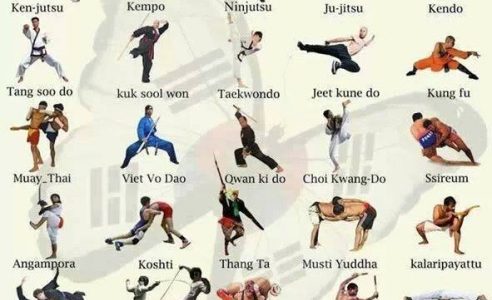Taekwondo For Protection: Practical Tips And Methods
Taekwondo For Protection: Practical Tips And Methods
Blog Article
Content Writer-Gissel Shields
Seeking to improve your individual safety and security strategies? Taekwondo, a fighting style recognized for its speedy kicks and effective strikes, might simply be the ability you need.
With its emphasis on self-defense techniques, Taekwondo provides sensible ideas and techniques that can be applied in real-life situations. Whether martial arts dojo 're a newbie or have some experience, this discussion will give you with important insights and techniques to boost your Taekwondo abilities for protection.
So, prepare yourself to unlock the secrets behind Taekwondo's performance in guarding on your own, and find exactly how you can become better equipped to handle any kind of possible threat.
Standard Taekwondo Strategies for Self-Defense
To effectively protect on your own using Taekwondo, it's vital to understand fundamental strategies that enable you to react quickly and emphatically in any protection circumstance.
One of the basic techniques in Taekwondo is the front kick. This technique includes lifting your knee to your chest and expanding your leg ahead, intending to strike your challenger's breast or confront with the round of your foot.
One more important technique is the roundhouse kick. With this kick, you pivot on your sustaining foot and turn your leg in a round activity, aiming to strike your challenger's body or head with the top of your foot or shin.
The side kick is an additional reliable technique, entailing a fast and powerful drive of your leg to hit your opponent's midsection.
Reliable Techniques for Making Use Of Taekwondo in Real-Life Situations
After grasping the basic methods of Taekwondo for self-defense, it's crucial to establish efficient methods that can be used in real-life situations.
Here are three crucial techniques to assist you make use of Taekwondo efficiently:
- Remain calmness and focused: In a real-life situation, it's simple to panic or become overloaded. Nevertheless, by staying https://www.kuam.com/story/44757796/explore-the-rich-history-of-japanese-martial-arts-at-uog-exhibit and concentrated, you can think much more plainly and make better choices.
- Use https://martial-arts-karate-for-k22109.yomoblog.com/38932070/opening-the-power-within-strength-training-for-martial-artists : Taekwondo isn't practically kicks and punches. It has to do with using your environment to your advantage. Search for things that can be made use of for protection or to create range in between you and your assailant.
- Go for vulnerable points: When protecting yourself, aim for the weak points of your attacker. Strikes to the eyes, throat, groin, or knees can promptly disable a challenger and offer you the advantage.
Tips for Improving Your Taekwondo Skills for Protection
Developing your Taekwondo abilities for protection requires consistent practice and a concentrate on crucial techniques.
To improve your abilities, start by understanding the fundamentals. Service your stance, balance, and footwork to guarantee a strong foundation.
Practice your kicks and punches to establish speed, power, and precision. Integrate protective methods such as blocks and parries right into your training to successfully protect on your own versus strikes.
On a regular basis spar with a partner to mimic real-life scenarios and boost your reaction time and decision-making skills.
In addition, cross-training in other martial arts or battle sporting activities can provide an all-round technique to self-defense.
Conclusion
As you step out of the taekwondo studio, your mind is filled with new strategies and approaches for protection. You feel confident in your capacity to protect yourself in real-life scenarios.
However amidst the power and grace of taekwondo, remember that real protection lies not just in physical expertise, however additionally in the ability to stay clear of dispute and scattered tense situations.
Taekwondo is an effective tool, yet it is very important to use it sensibly and sensibly.
